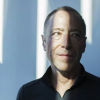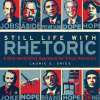Research stories
 When it comes to agenda-setting, it’s out with the old, in with the new media, researchers say.For decades, two of America’s legacy media giants, The New York Times and The Washington Post, have had the biggest influence in setting the agenda for
When it comes to agenda-setting, it’s out with the old, in with the new media, researchers say.For decades, two of America’s legacy media giants, The New York Times and The Washington Post, have had the biggest influence in setting the agenda for Steven Frost, a CMCI instructor, is also an artist who tells the stories of hidden histories through objects and performances. He has several exhibits and events scattered throughout spring 2017. Learn more about them by
Steven Frost, a CMCI instructor, is also an artist who tells the stories of hidden histories through objects and performances. He has several exhibits and events scattered throughout spring 2017. Learn more about them by Native advertising's very effectiveness can make it deceptive and endangering to journalistic credibility, say a group of journalists and advertising and public relations executives interviewed by CMCI researchers.
Native advertising's very effectiveness can make it deceptive and endangering to journalistic credibility, say a group of journalists and advertising and public relations executives interviewed by CMCI researchers. Vargo, who uses computer science methods to investigate social data, explained how the belief that vaccines cause autism spread on social media. Watch a full video of his presentation.
Vargo, who uses computer science methods to investigate social data, explained how the belief that vaccines cause autism spread on social media. Watch a full video of his presentation. Palen, Chair of the Department of Information Science, published a policy article in the journal "Science" discussing the challenges and promises of using social media data to study disasters.
Palen, Chair of the Department of Information Science, published a policy article in the journal "Science" discussing the challenges and promises of using social media data to study disasters. Continuing a tradition established in 2012, University of Colorado Boulder faculty members, students and staff presented their research at the 2016 Denver Comic Con, touching on topics such as gender representation in popular media, action figure culture and the racial politics in recent Superman comics.
Continuing a tradition established in 2012, University of Colorado Boulder faculty members, students and staff presented their research at the 2016 Denver Comic Con, touching on topics such as gender representation in popular media, action figure culture and the racial politics in recent Superman comics. Five CMCI researchers are presenting papers at the top conference in the field of human-centered computing. From gamification to death on Facebook, here are short summaries of their research.
Five CMCI researchers are presenting papers at the top conference in the field of human-centered computing. From gamification to death on Facebook, here are short summaries of their research. Associate Professor David Slayden offers advice to entrepreneurs in a recent column in Fortune magazine.
Associate Professor David Slayden offers advice to entrepreneurs in a recent column in Fortune magazine. According to a new study by Erin Schauster, blurred boundaries between advertising and public relations professions–due to new roles in social media–may pose a challenge for educators in those fields.
According to a new study by Erin Schauster, blurred boundaries between advertising and public relations professions–due to new roles in social media–may pose a challenge for educators in those fields. Laurie Gries, an assistant professor of communication, has won a 2016 CCCC Advancement of Knowledge Award for her book, Still Life with Rhetoric: A New Materialist Approach for Visual Rhetorics, which explores how images often spread and change across different media, genres and locations.
Laurie Gries, an assistant professor of communication, has won a 2016 CCCC Advancement of Knowledge Award for her book, Still Life with Rhetoric: A New Materialist Approach for Visual Rhetorics, which explores how images often spread and change across different media, genres and locations.

